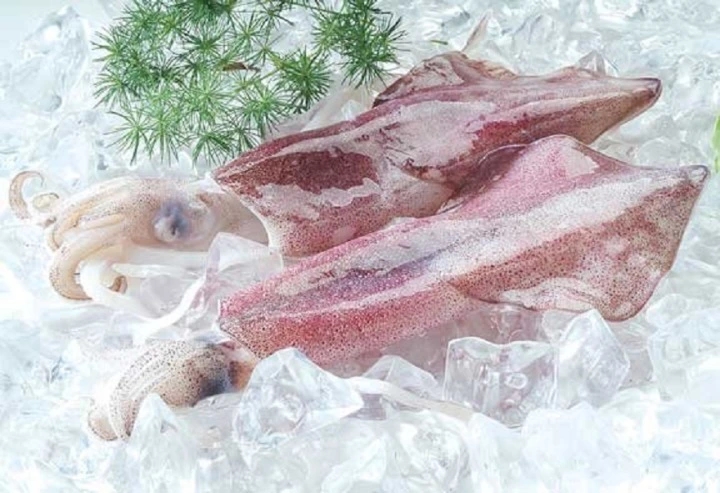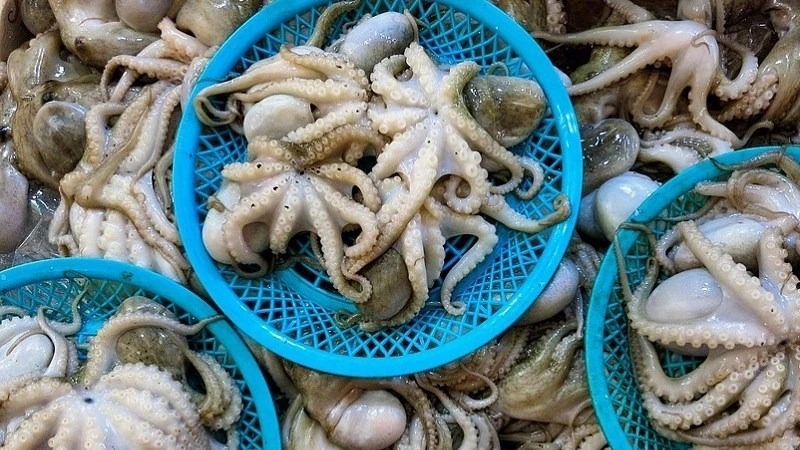Cleaning squid and octopus can be a messy and challenging task, but with these simple tips, you can do it quickly and effectively, ensuring your seafood dishes taste delicious and look appealing.
The Fastest Way to Clean a Squid
– Rinse the squid under running water. Then, grasp the tentacles firmly and pull them out of the body. Be decisive with your pull to ensure the guts and ink sac come out intact. However, be cautious, as breaking the ink sac will turn the squid black and bitter.
If you accidentally break the ink sac, quickly rinse the squid with water and proceed to the next steps.
– Use a knife to cut off the eyes and remove the hard, round part in the center of the head (the beak).
– Make a shallow cut at the head end of the body to create a ridge between the skin and the meat. Then, hold the meat with one hand and grasp the skin with the other, pulling upwards.

Choose fresh squid to ensure the meat remains crisp and firm during cooking. Illustrated image
– After removing the guts, tentacles, and ink sac, continue to peel off the backbone. The backbone is a large, white, translucent piece of cartilage that is easy to spot.
– Make a longitudinal cut on the body, open it up, and scrape out any remaining entrails. Then, rinse the squid thoroughly with water.
It’s important to choose fresh squid to maintain the crispness and firmness of the meat, ensuring your dishes are tasty and appealing.
The Fastest Way to Clean an Octopus
– Wash the octopus thoroughly with water. If it’s frozen, thaw it before washing. Cut right below the eyes to remove the tentacles and set them aside.
– To remove the innards, hold the body of the octopus with the eyes facing the ground. Insert scissors parallel to the ground, into the back of the neck, and cut. Then, open up the body cavity and use a knife to remove the innards.
– Wash the octopus with salt to eliminate any sliminess. Next, boil water with guava leaves, let it cool slightly, and then rinse the octopus in this water to remove any fishy odor.
– Crush some ginger and mix it with the octopus meat to add fragrance. Then, rinse the octopus with water 2-3 times and drain.

Not everyone knows how to clean an octopus quickly and effectively. Illustrated image
– Cut the head separately, then cut it into rings or leave it whole for stuffing (depending on your recipe). Cut the legs into bite-sized pieces.
With these simple steps, you’ve completed the octopus cleaning process. As with squid, choosing fresh octopus makes the cleaning process easier and results in a delicious and nutritious dish.
According to Life and Law


































